Two trends in substance use are affecting the bottom line among small businesses. One is a significant increase in the abuse of prescription painkillers. The other is the increased use of marijuana as a result of increased deregulation.
According to a survey conducted by Employers Holdings Inc., one out of 10 small businesses report having employees show up to work while under the influence of at least one controlled substance, with lost productivity and potential insurance costs affecting the bottom line of the business.
Many companies require that employees provide a clean urine or blood sample both at hiring and at the discretion of the employer for random testing. However, in some cases, the employee may arrive at work visibly affected by a substance.
Prescription Drug Use
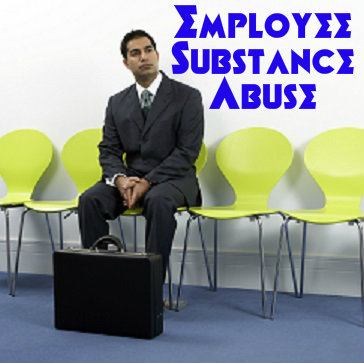 Opioid misuse has been on the rise. The U.S. Centers for Disease Control and Prevention report that more overdose deaths are now recorded for prescription opioids than for heroin or cocaine.
Opioid misuse has been on the rise. The U.S. Centers for Disease Control and Prevention report that more overdose deaths are now recorded for prescription opioids than for heroin or cocaine.
Prescription drug abuse often begins with a legitimate pain problem, often resulting from a serious injury or chronic disease. The patient may not receive adequate warnings, or they may not exercise the necessary caution in avoiding addiction to the drug.
In other cases unlocked medicine cabinets provide an opportunity for forgotten pills to be pilfered. Opioids can produce the same high as heroin, and they are a popular choice for experimentation. Many users mistakenly believe that because the drugs are obtained through a prescription from a doctor they aren’t as dangerous as street drugs.
Instead, experts say, the use of opioids can be just as dangerous as street drugs. Common reactions include a racing pulse or stroke. In some cases users may combine the drugs with other pills to make a unique cocktail and significantly increase the likelihood that they will experience negative side effects.
One potential danger of using opioids is that when a user runs out of opportunities to obtain prescription opioids from the medicine cabinets of friends and relatives the addiction may be fully developed. Buying pills on the street can be very expensive, costing $80 to $100 per pill. The remedy, in too many cases, is to start using heroin. Heroin is available and cheap, compared to prescription painkillers.
Marijuana Use Increasing
The increasing legalization of marijuana is also becoming a challenge for employers. Many don’t believe that their employees are able to work safely while under the influence, and are struggling to adequately prevent the substance from impacting their business, the safety of their employees and those they interact with on any given day.
With states beginning to allow the possession and use of marijuana, the impact is being felt by small businesses. In Colorado, where marijuana sales are booming, employers are scrambling to compensate for the impact the drug can have on their employees and their businesses.
More than half of employers surveyed even mentioned over-the-counter medications as a particular danger to employees and those around them. Three-quarters of the employers agreed that marijuana, prescription painkillers, alcohol and illicit narcotics presented a danger to their employees.
The survey was conducted by International Communications Research, who interviewed 502 small businesses that were nationally representative of small businesses that have fewer than 100 employees.
Find Out If Some Businesses Reward Drug Abuse
The FDA’s approval of a drug it says “will fill an important niche” in the treatment of chronic pain has caused a huge uproar over fears about its potential for abuse.
Zohydro was given the go-ahead in October 2013 for the treatment of moderate-to-severe chronic pain. Developed by the pharmaceutical company Zogenix, Zohydro is composed of an unmixed, undiluted 50-milligram shot of the opioid analgesic hydrocodone, which is the primary ingredient in the well-known and widely prescribed pain-relieving drug Vicodin. Zohydro is approximately five times more potent than Vicodin, however, and according to FDA Commissioner Dr. Margaret Hamburg, it will fill “an important and unique niche” in the crowded prescription painkiller marketplace. Zohydro was released in March, and all patients who receive a chronic pain diagnosis will now be eligible to obtain a prescription for this powerful narcotic.
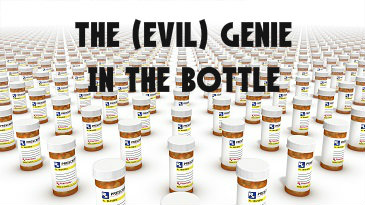 But the FDA’s decision to approve the release of Zohydro was highly surprising, since its own advisory panel had voted 11-2 against approval. The medical authorities appointed to this panel cited the highly addictive nature of opioid medications as the rationale for their thumbs-down verdict. In the months that have passed since the Zohydro ruling, the criticism directed at the FDA has only intensified, and the agency has been forced to repeatedly defend a decision that many see as indefensible.
But the FDA’s decision to approve the release of Zohydro was highly surprising, since its own advisory panel had voted 11-2 against approval. The medical authorities appointed to this panel cited the highly addictive nature of opioid medications as the rationale for their thumbs-down verdict. In the months that have passed since the Zohydro ruling, the criticism directed at the FDA has only intensified, and the agency has been forced to repeatedly defend a decision that many see as indefensible.
Addiction to pharmaceutical-grade painkillers has reached epidemic proportions, and the U.S. Centers for Disease Control has confirmed that opioids like OxyContin and Vicodin are the primary villains in this unfolding tragedy. Many medical professionals apparently came to view these drugs as panaceas and began prescribing them for all degrees of pain and a vast assortment of conditions, and, as a result, opioid addiction rates exploded. Since Zohydro is just a turbo-charged version of Vicodin, it is likely to be far more addictive than its milder cousin, and many medical experts believe it is the height of folly, if not downright hypocritical, for the government to be putting such a potentially dangerous substance into circulation at a time when the fight against prescription drug abuse has just begun to pick up steam.
In September 2013, the FDA announced it was actually tightening label restrictions on opioid painkillers, recommending that physicians use them only with patients who needed round-the-clock treatment for chronic pain and when there were no other viable treatment options available. This action was unequivocally justified as a strategy to combat addiction, so observers were taken aback when only one month later the FDA chose to approve a drug that threatens to accelerate the opioid addiction problem.
Critics of the FDA’s decision launched a campaign to convince the organization to change its minds, and representatives of more than 40 influential healthcare/addiction treatment organizations signed and submitted a letter to the agency that outlined the dangers of adding Zohydro to the menu of available opioid painkillers. But this ardent plea from the experts was to no avail, and the FDA steadfastly refused to reverse its puzzling course.
The (Evil) Genie in the Pill Bottle
The FDA is often accused of having an overly cozy relationship with big pharma and big agriculture, the industries it has been tasked with regulating, and this decision to legalize a new narcotic painkiller despite the negative judgment of its handpicked medical advisors would seem to represent a triumph of favoritism over sensible public policy. In response to what many see as an outrage, separate bills have now been introduced in the House and Senate that if passed would compel the FDA to remove Zohydro from the marketplace.
Compounding the situation, later in the year the drug giant Purdue Pharma will release another single-ingredient/high-dose hydrocodone painkilling drug, in a tamper-resistant form that may render Zohydro obsolete. This company already sells a tamper-resistant version of OxyContin, which allegedly cannot be crushed or dissolved for chewing or snorting and therefore is not supposed to be as addictive (chewing or snorting opioids delivers a more concentrated dosage to the bloodstream). A less malleable form of mega-jolt hydrocodone would presumably offer the same advantages, and the folks manufacturing Zohydro would likely have to switch to a tamper-resistant form themselves if they expected their drug to survive.
But addiction treatment specialists dispute the notion that making addictive drugs harder to alter makes them less dangerous. They note that virtually every person who has become dependent on opioid painkillers started out swallowing pills and only later resorted to chewing or snorting when their substance abuse problems raged out of control. Nevertheless, many fear the positive PR that tamper-resistant technology has received may help to defuse some of the opposition that this new class of drugs has generated, assuming they do eventually show up on the marketplace in this more “respectable” form.
Read How Big Pharma Is Testing Super Painkillers
05 May 2014
Prevent Prescription Drug Abuse In Your Teen
Prescription drug abuse is a major problem across the U.S. and for people of all age groups. Teens, however, are particularly vulnerable and if you have children you should be aware of the risks and dangers. There are two main kinds of drugs being abused by young people: narcotic painkillers and stimulants. The former are used to get a high, but the latter are often abused as a study aid. Stimulants, like those used to treat ADHD, produce wakefulness and many teens use them to stay up at night for studying.
The statistics regarding teen abuse of prescription drugs are alarming. Since 2008, abuse has risen by 33 percent. The statistics also show that most young people do not believe there are any risks in abusing prescriptions and that parents are largely ignorant when it comes to their children’s abuse of these drugs as well as the risks. Learn how to keep your teen safe.
Where Do Teens Get Prescription Drugs?
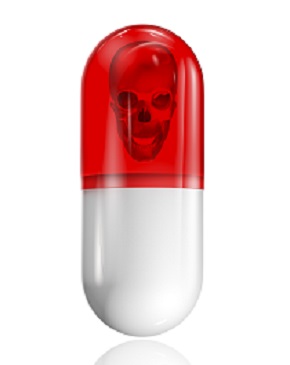 The first line of defense against abuse of prescriptions by your teen is to limit her access to them. So where are teens getting these medications? The most common location for teens to find prescriptions is the medicine cabinet. Teens get drugs right from their own homes. If they can’t find them there, they turn to their friends’ medicine cabinets. Many people are prescribed narcotics and stimulants, so finding them in homes is not difficult.
The first line of defense against abuse of prescriptions by your teen is to limit her access to them. So where are teens getting these medications? The most common location for teens to find prescriptions is the medicine cabinet. Teens get drugs right from their own homes. If they can’t find them there, they turn to their friends’ medicine cabinets. Many people are prescribed narcotics and stimulants, so finding them in homes is not difficult.
If the drugs cannot be pilfered, your teen can most likely buy them. Buying and selling prescriptions in high schools are common. Your teen may also be able to purchase medications online. Illegal pharmacies will not hesitate to sell to a teen.
How Can I Limit My Teen’s Access To Prescriptions?
With prescription medications so prevalent in homes, at schools and online, you need to be especially vigilant to restrict your teen’s access. If you have prescriptions in your home, keep them in a locked cabinet. If your teen has been prescribed one of these commonly abused medications, keep it locked up and dose it out to her as directed by her doctor. A common source for stolen medications is expired pills that have been forgotten or thrown in the trash. Be aware of your unused drugs, keep track of them and dispose of them properly.
Unfortunately, limiting your teen’s access to drugs at home is where your control ends. You cannot control her access at school or at friends’ houses. What you can do, though, is educate your teen about the risks and dangers of drug abuse. First read up for your own knowledge and then talk to your children about how harmful prescriptions can be. Although they are legal and prescribed by doctors, these factors do not mean they are safe for everyone.
It is also important to educate your family and friends about prescriptions and keeping them under control. Your teen may be able to find drugs at a grandparent’s house or any other family member’s, but if everyone kept tighter control of their medications, fewer drugs would end up on the black market.
Finally, it’s important that you maintain a close and open relationship with your teen. The more time you spend interacting and talking, the more able you will be to detect when something is wrong or if she is showing signs of abusing drugs. This healthy relationship will also mean that your teen will be more likely to come to you with questions, concerns, and problems related to drugs and drug abuse.
Texting is quickly replacing phone calls. Now the Drug Enforcement Administration (DEA) has decided to turn the texting craze into the latest weapon in the DEA’s fight against prescription drug abuse.
The administration has developed a new initiative called TIP411 which launched in late February in the state of Georgia. Anyone in the public who observes suspicious behavior, especially those who work in pharmacies, can now text a message to TIP411 (847-411) along with the phrase PILLTIP to alert DEA agents.
The Need For Better Prescription Drug Monitoring
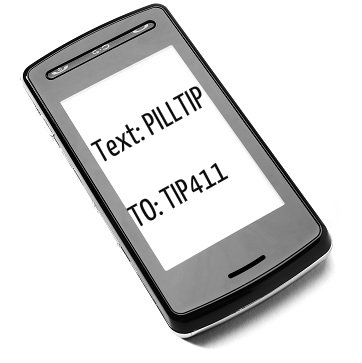 The U.S. Centers for Disease Control and Prevention (CDC) report that prescription drugs are largely behind a tripling of overdose rates in the nation since 1990. In 2008 more Americans died from taking prescription pain relievers (usually opioids) than those who died because of heroin or cocaine use. The glut of prescription drugs, and opioid pain relievers in particular, has almost certainly exacerbated the problem. According to the CDC since 1999 there has been a 300 percent rise in the sale of these potent drugs. Having so many pills out there among the public makes it all-too-easy for abuse to take hold.
The U.S. Centers for Disease Control and Prevention (CDC) report that prescription drugs are largely behind a tripling of overdose rates in the nation since 1990. In 2008 more Americans died from taking prescription pain relievers (usually opioids) than those who died because of heroin or cocaine use. The glut of prescription drugs, and opioid pain relievers in particular, has almost certainly exacerbated the problem. According to the CDC since 1999 there has been a 300 percent rise in the sale of these potent drugs. Having so many pills out there among the public makes it all-too-easy for abuse to take hold.
Most often, people obtain the drugs simply by raiding the family medicine shelf. Others buy them from friends who had a legitimate prescription from their doctor. The 2010 National Survey on Drug Use and Health found that just 2.3 percent of prescription drug abusers get their drugs from a stranger or the local drug dealer.
Eventually legitimate prescriptions run out and addicts must find another source. Sometimes prescriptions are forged, complete with fake callback numbers. Other times they doctor shop, which entails making appointments with several physicians and describing symptoms at each office in search of multiple prescriptions for painkillers. When all of these sources fail users frequently turn to heroin, which is in the same drug family as prescription opioids.
In conjunction with the launch of the text tip line, the DEA also mailed out printed materials to 1,200 Atlanta pharmacies. The materials tell pharmacy employees and pharmacists what signs to look for and how to use the tip line.
Pharmacists and employees are told to be aware of how often people refill their prescriptions. They are also warned to be suspicious when a person is holding a prescription for both a depressant and for a stimulant. Handwriting that’s too legible is another red flag.
Can The Text Line Be Fraudulently Used To Obtain Drugs?
There have been instances when users call the pharmacy impersonating a physician. However, opioids require the doctor to give his or her personal drug number proving they are licensed to dispense drugs. And some drugs cannot be prescribed over the phone. Attempts to phone in prescriptions without a proper drug number, or asking for written-prescription-only meds, should sound a warning bell.
In some cases an hourly employee at the pharmacy may be driving a luxury vehicle or taking exotic vacations. This should spark interest. On the other hand, pharmacists themselves have been known to hand out drugs in exchange for sexual favors. The DEA hopes that inviting hens to keep an eye on the hen house will yield some useful information.
While Georgia is one of the first areas in the country to implement TIP411, a similar program is being tested in Philadelphia. Wherever it is used, DEA agents say they don’t expect to get a large number of tips, but they’re hopeful that what does come through will prove fruitful.
16 Apr 2014
Is Prescription Drug Misuse, Abuse?
Prescription drug abuse is a pressing concern in modern American society, where millions of adults and younger individuals take potentially addictive medications without proper authorization or for purely recreational purposes. However, not all people who abuse a prescription medication necessarily understand what they’re doing. In a study published in March 2014 in the journal Substance Abuse, researchers from New York University used a small-scale experiment to estimate how many people know what constitutes participation in prescription drug abuse.
Is Misusing Abusing?
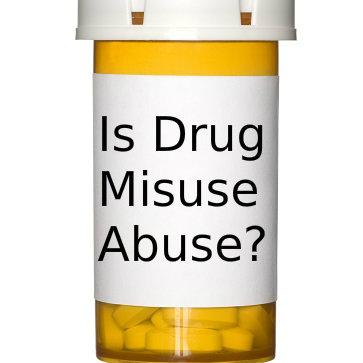 Prescription drug abuse is also sometimes known as the nonmedical use of prescription drugs. Technically, a person participates in this form of abuse whenever he or she knowingly takes his or her prescribed medication in a manner other than intended or knowingly takes a medication prescribed for someone else. However, some public health experts make a distinction between prescription drug abuse and prescription drug misuse. This distinction holds that abusers purposefully seek to obtain a nonmedical benefit from improper use of a medication, while misusers seek to obtain a medical benefit (such as pain relief) from improper medication use. In addition, public health officials typically distinguish between the abuse/misuse of medications that have no potential to trigger physical dependence and addiction, and the abuse/misuse of medications with an addictive potential.
Prescription drug abuse is also sometimes known as the nonmedical use of prescription drugs. Technically, a person participates in this form of abuse whenever he or she knowingly takes his or her prescribed medication in a manner other than intended or knowingly takes a medication prescribed for someone else. However, some public health experts make a distinction between prescription drug abuse and prescription drug misuse. This distinction holds that abusers purposefully seek to obtain a nonmedical benefit from improper use of a medication, while misusers seek to obtain a medical benefit (such as pain relief) from improper medication use. In addition, public health officials typically distinguish between the abuse/misuse of medications that have no potential to trigger physical dependence and addiction, and the abuse/misuse of medications with an addictive potential.
There are several reasons any given individual might start abusing/misusing a prescription medication. For example, some people mistakenly believe that since prescription medications come from doctors, they don’t pose a particular danger even when used in an unintended manner. Known risks of prescription medication abuse/misuse include the development of a diagnosable case of drug abuse or drug addiction (i.e., substance use disorder) and the onset of a nonfatal or fatal overdose.
Extent Of The Prescription Misuse Problem
The federal Substance Abuse and Mental Health Services Administration tracks year-to-year trends in prescription drug abuse through an annual project called the National Survey on Drug Use and Health. The most recent available figures from this survey, which cover part of 2011 and most of 2012, indicate that about 6.8 million American adults and teenagers abuse a mind-altering, potentially addictive medication in the average month. This number represents roughly 2.6 percent of the total adult and teen U.S. population. In descending order of popularity, the four classes of medications most commonly targeted for abuse are opioid painkillers, tranquilizers, stimulants and sedatives. Opioid painkiller abuse occurs far more often than any other form of prescription medication abuse.
How Many Understand The Definition Of Abuse?
In the study published in Substance Abuse, researchers from three branches of New York University (including the NYU School of Medicine and the NYU College of Nursing) used a small-scale assessment of 27 patients receiving treatment at a primary care clinic to estimate how many people understand the definition of prescription drug abuse (defined by the research team as nonmedical prescription drug use/prescription drug misuse). They began this assessment by asking each of the study participants to complete a brief questionnaire on the use/misuse of alcohol, tobacco, illegal/illicit drugs and prescription medications. In addition, the researchers used interviews to probe the answers each participant gave on his or her questionnaire. Six of the 27 patients had a recent history of prescription drug abuse/misuse, while another eight had a recent history of abusing an illegal/illicit substance.
The researchers found that all but one of the study participants understood what constitutes the use of an illegal or illicit drug. However, fully 41 percent of the participants inaccurately described what constitutes the abuse/misuse of prescription medications. The most frequently encountered inaccuracy was a failure to distinguish between medications with a potential for triggering problems with abuse and addiction, and medications that have no such potential. Interestingly, none of the study participants with a history of illegal/illicit drug use inaccurately understood the meaning of prescription drug abuse/misuse.
The authors of the study published in Substance Abuse concluded that many of the patients who discuss prescription drug abuse/misuse with their doctors may not understand the terms and definitions that doctors commonly employ. This tendency toward misunderstanding appears to be especially prominent in people who have no personal experience with illegal/illicit drug intake. Based on these findings, the study’s authors believe that primary care doctors who screen their patients for potential prescription drug abuse may inadvertently misidentify those patients as medication abusers in a significant number of cases. In line with this belief, they point toward a need to clarify the language used to explain prescription drug abuse/misuse to patients.
Read about The Effects Of Psychosis On Drug Misuse
The United States is awash in opioid painkillers with addiction rampant. Since 1999 prescriptions for opioids have tripled and the number of opioid-related deaths have quadrupled, with legally prescribed medications now accounting for 60 percent of drug overdoses. There are five million Americans currently addicted to opioids, and three out of four overdose fatalities are caused by opioids. So do we really need another opioid medication? Do the benefits outweigh the risks?
What Is Zohydro?
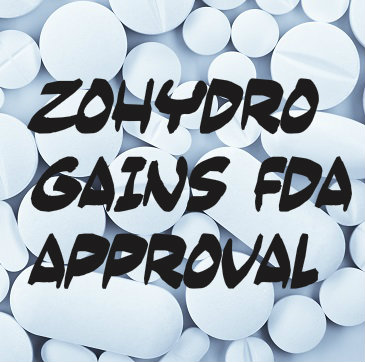 A new opioid called Zohydro, approved by the Food and Drug Administration (FDA) in late 2013, is Hydrocodone with an extended, 12 hour release formula. For comparison, the painkiller Vicodin is Hydrocodone with acetaminophen. Zohydro has no acetaminophen – it’s unadulterated Hydrocodone that has been described as five or 10 times stronger than Vicodin. A single tablet could kill a child, and two pills could be enough to kill an older person unaccustomed to opioids.
A new opioid called Zohydro, approved by the Food and Drug Administration (FDA) in late 2013, is Hydrocodone with an extended, 12 hour release formula. For comparison, the painkiller Vicodin is Hydrocodone with acetaminophen. Zohydro has no acetaminophen – it’s unadulterated Hydrocodone that has been described as five or 10 times stronger than Vicodin. A single tablet could kill a child, and two pills could be enough to kill an older person unaccustomed to opioids.
Additionally, the pills are not crush or addiction resistant. As the opioid epidemic grew, many manufacturers reformulated their pills in order to make them more difficult to abuse. One way to achieve this is to add certain ingredients to the pills which cause unpleasant side effects if they are crushed and snorted or injected. Those side effects are not present when the drugs are taken orally as prescribed. People addicted to opioids often snort or inject them in order to get a fast and intense high.
FDA Approval Of Zohydro
However, the FDA decided to approve Zohydro with none of these precautions in place. A loud outcry from doctors, congressmen, pharmacists, lawyers, addiction specialists and state Attorneys General followed. All of these and more have asked the FDA to reconsider its decision to approve the potent new drug. Add to the list the FDA’s own advisory panel which voted overwhelmingly (11-2) to withhold approval of Zohydro.
A group of experts has written a forceful letter to the FDA urging it to rethink its decision to approve Zohydro. The addiction risk is simply too overpowering, the experts explain.
A look at the benefits gained versus risks imposed lead experts to say this should be enough to halt the drug’s release. We already know it‘s impossible to keep drugs in the hands of pharmacists, physicians and legitimate patients. A certain amount will inevitably be diverted toward un-prescribed and illicit use. And that, in turn, will mean a surge in opioid addiction.
Experts agree that the more opioid pills available in the country, the greater the risks for addiction. So one would expect approval of new opioids to be very hard to come by, which is what makes the Zohydro case so very perplexing.
There is an already a climate of opioid abuse. Opioids without tamper-resistant formulas or addiction-resistant formulas are ripe for abuse. And important voices from every direction are crying “Stop!”
Read About Understanding Opioid Related Disorders
GHB is the common shorthand for gamma hydroxybutyrate, a drug of abuse identified as both a “club drug” and a “date rape” drug. People who use this drug repeatedly over time can develop a severe form of drug withdrawal that has the potential to produce fatal results. In a study published in February 2014 in the journal Drug and Alcohol Dependence, a team of Dutch researchers investigated the best options for treating individuals affected by GHB withdrawal. These researchers concluded that the appropriate option varies according to any given person’s level of involvement with GHB use.
What Is GHB?
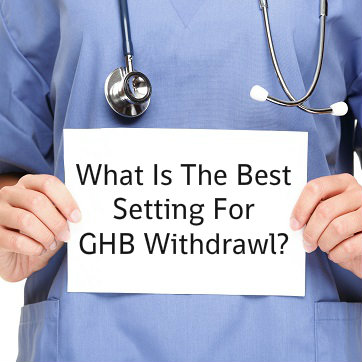 GHB occurs naturally inside the human brain, but only in small amounts. Trace amounts of the chemical also appear in certain types of wine and beer. A specific form of pharmaceutical GHB, called sodium oxybate (Xyrem), has legitimate medical use as a treatment for the sleep disorder narcolepsy. However, access to this medication is strictly controlled through federal law, and most people who use/abuse GHB recreationally rely on illegally produced batches made by clandestine drug manufacturers.
GHB occurs naturally inside the human brain, but only in small amounts. Trace amounts of the chemical also appear in certain types of wine and beer. A specific form of pharmaceutical GHB, called sodium oxybate (Xyrem), has legitimate medical use as a treatment for the sleep disorder narcolepsy. However, access to this medication is strictly controlled through federal law, and most people who use/abuse GHB recreationally rely on illegally produced batches made by clandestine drug manufacturers.
GHB alters normal brain and body function by reducing the rate of communication inside the central nervous system. The baseline effects of this reduction include both sedation and a form of euphoric intoxication. In addition, roughly two-thirds of all users of the drug lose consciousness. The euphoric and sedating effects of GHB largely account for its use as a club drug. The sedating and unconsciousness-producing effects of GHB largely account for its use as a date rape drug; its use as a date rape drug also stems from its ability to trigger amnesia. Other known potential effects of GHB use include hallucinations, nausea, vomiting, confusion, headaches and loss of body control. People who overdose on the drug can develop seizures, experience a dangerous decline in normal lung function, go into a coma or die.
Addiction To GHB And Withdrawal From It
When used repeatedly over time, GHB can trigger the long-term changes in brain function required to produce substance addiction. One of the classic signs of any form of drug or alcohol addiction is the onset of withdrawal symptoms when substance use ends or tapers off rapidly. In the case of GHB addiction, potential withdrawal symptoms include excessive sweat production, a highly anxious mental state, uncontrollable body tremors and sleeplessness. Some people develop severe forms of these symptoms that can lead to highly debilitating or even fatal changes in brain and body health.
What Is The Withdrawal Treatment Setting?
In the study published in Drug and Alcohol Dependence, researchers from three Dutch institutions sought to establish guidelines for the best way to address the effects of GHB withdrawal. They undertook this work because, despite the potentially severe nature of this withdrawal, some individuals may recover well in an outpatient setting rather than in a hospital. The researchers began the project by gathering case studies of patients going through GHB withdrawal from 40 professionals specializing in addiction medicine. These case studies were reviewed by another 15 addiction specialists who made recommendations for hospitalization or outpatient care for each patient under consideration. In the study’s third and final stage, five specialists with extensive experience in treating GHB withdrawal reviewed the rationale used for assigning any given patient to hospitalization or outpatient treatment.
All told, 20 patients going through GHB withdrawal were assessed and/or reviewed by the three groups of experts. The researchers concluded that two main factors account for the decision to either hospitalize a person going through withdrawal or recommend outpatient treatment: the amount of GHB used each day and the frequency of GHB intake. As a rule, patients who take 32 grams or more of the drug every day and use the drug at least every two hours require hospitalization when going through withdrawal. Patients who take smaller daily amounts of the drug and use the drug less than every two hours are potential candidates for outpatient withdrawal treatment.
The authors of the study published in Drug and Alcohol Dependence note that people with diagnosable psychiatric problems who go through GHB withdrawal may also require hospitalization rather than outpatient care. Conversely, people with strong support networks have an increased chance of receiving outpatient treatment when going through withdrawal. The authors believe that, overall, their work provides a solid framework that doctors can use when determining the best treatment setting for a person withdrawing from GHB use.
14 Mar 2014
Can Diet Pills Be Addictive?
Taking diet pills to supplement weight loss can be beneficial for some people, but risky for others. If you are worried about someone you love who is taking diet pills, learn more about them and what to do to help. The Food and Drug Administration (FDA) has approved very few medications for assisting with weight loss. Many over-the-counter remedies are supplements and are not regulated. Understand the dangers and side effects that come with taking these diet aids and confront your loved one if you are worried about her health and wellbeing.
How Do Diet Pills Work?
Different diet supplements work in different ways. Most are supposed to suppress your appetite and supplements that make this claim may include green tea extract, chromium, drugs called catecholamines, or an herb called hoodia. How effective these are is uncertain.
Types Of Diet Pills
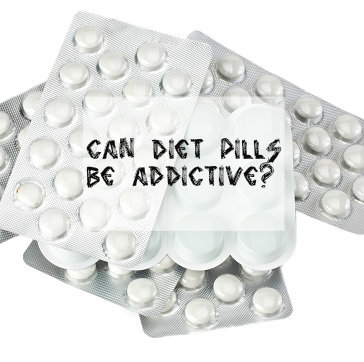 One prescription drug that works as an appetite suppressant is called phentemine.
One prescription drug that works as an appetite suppressant is called phentemine.
Another FDA-approved medication, which is available without a prescription, is called Alli. It aids in weight loss by blocking the body’s absorption of dietary fat. Other supplements claim to be able to block fat, but have not been evaluated by the FDA. They include ingredients like chitosan and guar gum.
The third and most dangerous type of diet drug includes stimulants. Stimulants are drugs that boost your metabolism causing you to burn more calories. Controversial pills, such as those that have ephedra as an ingredient, are often stimulants. Bitter orange is another herb you might see as an ingredient in a stimulant diet pill. Amphetamine, which is a prescription drug used to treat ADHD and narcolepsy, is often abused by people trying to lose weight because it is a powerful stimulant.
Are Diet Pills Addictive?
Most of the ingredients found in diet pills are not chemically addictive. In other words, unlike addictive drugs, they do not cause physiological changes to the brain that can lead to dependence. Stimulant drugs are an exception, especially amphetamine. Anyone abusing amphetamine to lose weight is putting herself at risk for addiction.
While most of the diet pill ingredients are not addictive, there is always the possibility of a psychological dependence on these medications. If someone you love is taking any type of diet pill more often than seems normal and is obsessing over her weight, she may have a type of addiction. She may also have an eating disorder or be on the path to developing one. It is important to intervene before she goes too far and really puts her health at risk.
What Are The Side Effects Of Taking Diet Pills?
There are plenty of potential side effects from all types of diet pills. Some are just uncomfortable, but others are dangerous. The riskiest side effects come from stimulants because they cause an increase in heart rate and blood pressure. When combined with alcohol, stimulants are especially dangerous. Other less serious side effects include headache, diarrhea, nausea, gas, constipation, insomnia and upset stomach.
How Can I Help If I Know Someone Who Is Overusing/Misusing Diet Pills?
If you know someone who is taking risks with diet pills, step in and express your concern. Educate your friend about the dangers of these pills, especially if she is taking stimulants. Encourage her to seek professional therapy so that she can learn how to have a healthy attitude toward her weight and her body. The best way to lose weight is through diet and exercise, so offer to be her partner in making good food choices and in working out.
Read More About Prescription Stimulant Abuse In Moms…And The Dangers


